The content of the article
The increased air humidity and water splashes that occur while bathing in the bathroom are the main cause of mold, fungi and unpleasant odors in the sanitary unit. So that the moisture does not soak into the walls and the floor, it is necessary not only to install floor and wall tiles correctly, but also to pay special attention to the sealing of the joints. High-quality bathroom sealant will help not only prevent the occurrence of mold in the room, but also reduce the risk of flooding of the neighbors from the bottom. But in order to avoid any problems during installation and its further operation, it is necessary to carefully study the technology of its installation and to choose the right material to be used for sealing the joints.
Sealing methods
To seal the seam between the wall and the bathroom, you can use these materials:
- Polyurethane foam. The fastest and most economical way to seal the joint between the bathroom and the wall is to use foam. But such technology is in many cases inappropriate, since the gaps processed by this material look extremely unaesthetic and spoil the interior of the room.
- Sealant. If the seam between the wall and the bathroom has a small width (no more than 1.5-2 cm), it can be sealed with a special sealant. These materials are of three types - acrylic, silicone and combined. Sealing the bath with such compositions will be more expensive and will take longer than in the case of mounting foam. But the joint sealed with synthetic sealant will be 100 percent protected from moisture penetration.
- Plinths. PVC profiles in which there is a self-adhesive tape look more aesthetically pleasing and attractive. Thanks to them, the seam will be almost imperceptible, and moisture through it will not penetrate the walls and floor.
How to choose silicone sealant
If you are going to seal the joint between the bathroom and the wall using silicone sealant, you should not buy the first composition that came to hand. Examine the labels on several cans and note these characteristics:
- The concentration of rubber.It is desirable that the composition of the sealant was not less than 40-50% rubber impurities. The higher this figure, the more effective the material will be.
- The concentration of pigment. Pigment (hydrophobic filler) should be present in the composition of the sealant at about the same concentration as rubber. If it turns out to be too small, the joint between the wall and the bathroom will quickly become depressurized due to constant exposure to moisture, and it will have to be re-sealed.
- Weight. For work you will be quite enough one canister weighing 0.5 kg. But do not buy material in too small quantities. After all, products from different batches can differ significantly in properties, and because of this one fragment of a seam can depressurize faster than another.
Please note: silicone sealant is of two types - acid and neutral. It is the second is the only material in which there are special additives against the appearance of the fungus. In other compositions there are no such impurities.
Features of acrylic sealants
Acrylic sealant for the bathroom is of two types - moisture resistant and unstable. Of course, to work in conditions of high humidity you need to choose the first one. The main difference between acrylic and silicone compounds is that they are less elastic.Therefore, if the bath is not firmly fixed (there is a slight gap), then the use of acrylic products will be impractical.
In addition, such compositions have a number of specific properties:
- Color stability Acrylic-based color bathroom sealant does not lose its original color with long-term use.
- Practicality. The joint between the wall and the bathroom, sealed with an acrylic mixture, can be further processed with plaster and any paint.
- Security. Unlike other formulations, such products do not contain organic solvents. Therefore, they are absolutely safe and do not cause skin irritation if accidentally released into the water during bathing.
Preparatory stage
Before starting work, it is necessary to remove all construction debris from the room, which remained after the installation of the bathroom, wipe the walls from dust and wait until the working surfaces are completely dry. After that, they must be degreased with alcohol, acetone or gasoline. To prevent the mixture from reaching visible areas of the walls, masking tape is attached to the suture edges in advance.This will avoid excessive contamination of the surfaces and make the joint perfectly flat.
Pay attention: in order to facilitate the procedure of applying the sealant, before starting it the balloon should be left in a warm place for a while. If the temperature of the mixture is slightly higher than the temperature of the air in the bathroom, the joints will be much easier to apply and level.
Sealant application procedure
After the wall and the adjacent side of the bathroom are prepared, you can proceed directly to the procedure. Sealing in the bathroom is done using the same technology, regardless of the type of sealant used (whether acrylic, silicone or combined):
- Scissors cut off the plastic spout on the can with a sealant. If the joint is narrow enough, it should be cut closer to the edge (so that the seam does not turn out to be too wide).
- With gentle and smooth movements, the bathroom sealant is squeezed out of the spray can onto work surfaces. The seam should be smooth and continuous. Otherwise, the joint between the wall and the adjacent side of the bath will not be tight.
- As the mixture is applied, the seam should be carefully leveled with a finger dipped in soapy water.It will not cause any harm to the skin on the hands.
- After the joint is completely sealed, the seam must dry thoroughly. Do not rush and turn on the water in the bathroom on the first day after completion of the work.
How to close up large gaps with skirting
If the gap between the wall and the bathroom is wide enough (more than 2 cm), you can use a PVC plinth to seal it. For this, it is advisable to choose a self-adhesive profile. It has a special adhesive tape, which greatly simplifies the installation technology and eliminates the need for additional adhesives.
Sealing the bath with these materials is as follows:
- Adjacent surfaces are carefully cleaned and degreased. If dust or debris remains on them, a self-adhesive tape cannot ensure tight contact between the bathroom and the wall.
- Next, you need to cut a piece of plinth desired width. For this you can use an ordinary hacksaw.
- In places where the adhesive tape will be applied border, paste masking tape.
- If necessary, you can pre-blow the gap with foam (but this step is not necessary).
- With the help of a building dryer, the baseboard is heated to the temperature at which the adhesive tape is activated (about 60-70 degrees).
- Next, the baseboard is tightly glued to the surface. To ensure that the tape provides a tight mount, the profile should be pressed tightly to the joint for a few seconds.
- After installing the skirting board, small gaps may remain. They can be sealed with a can of silicone sealant.
- Upon completion of work, it is necessary to leave the bathroom for about 12-24 hours, until the walls and seams are completely dry.
If there is no adhesive tape in the baseboards, you can use liquid nails to fix them. They are applied on both glued surfaces, after which the profile is laid. You should not press it immediately with great effort. You need to wait 2-3 minutes, and only then it can be gently pressed into the joint. At the final stage it is necessary to cut off the excess hardened glue and wait until the working surfaces are completely dry.
Video: how to seal the seam between the bathroom and the wall

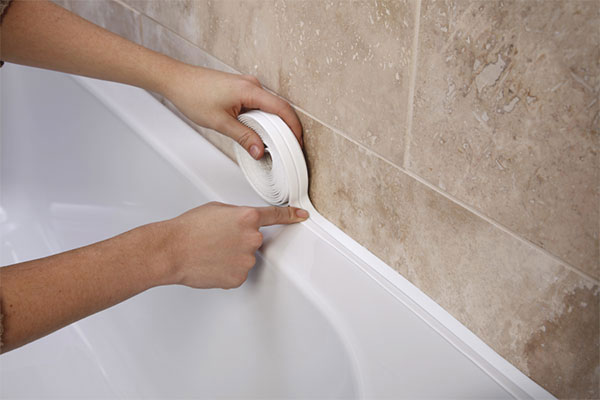
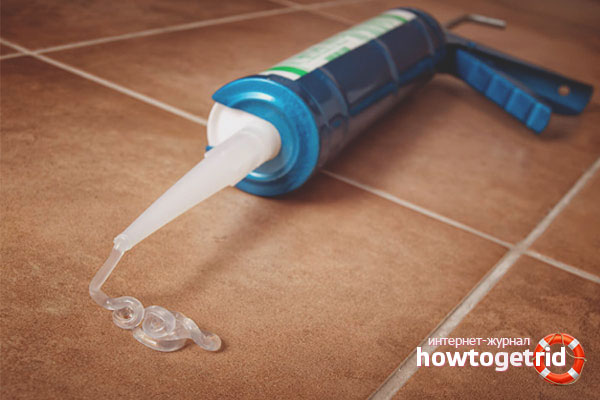
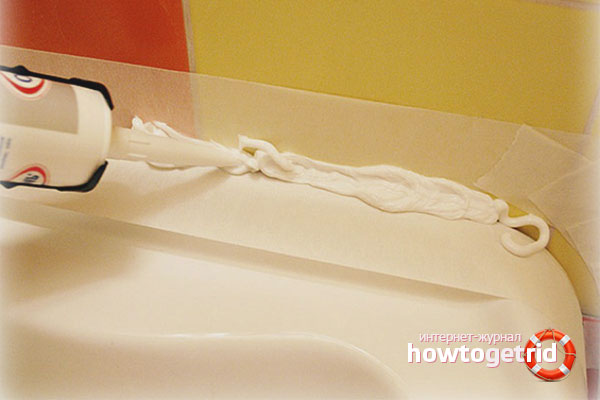
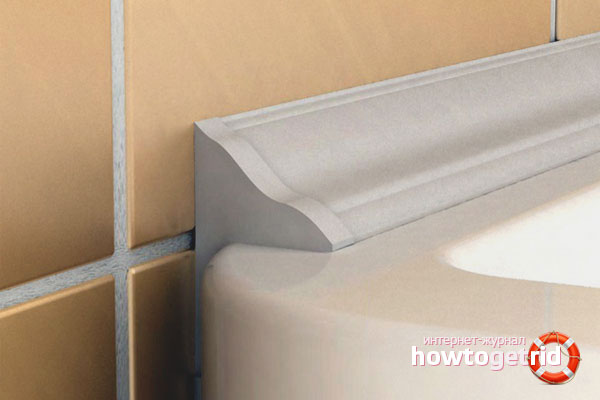






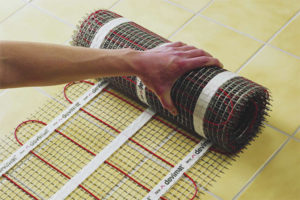


To send